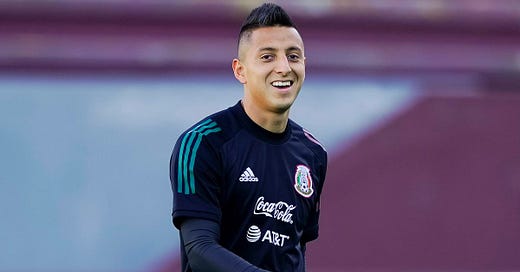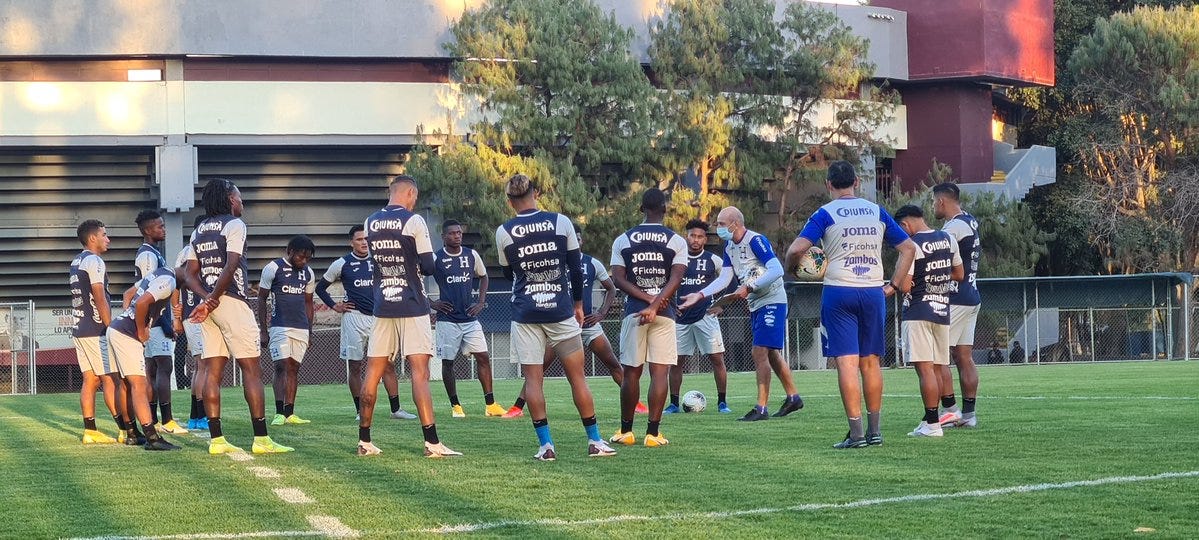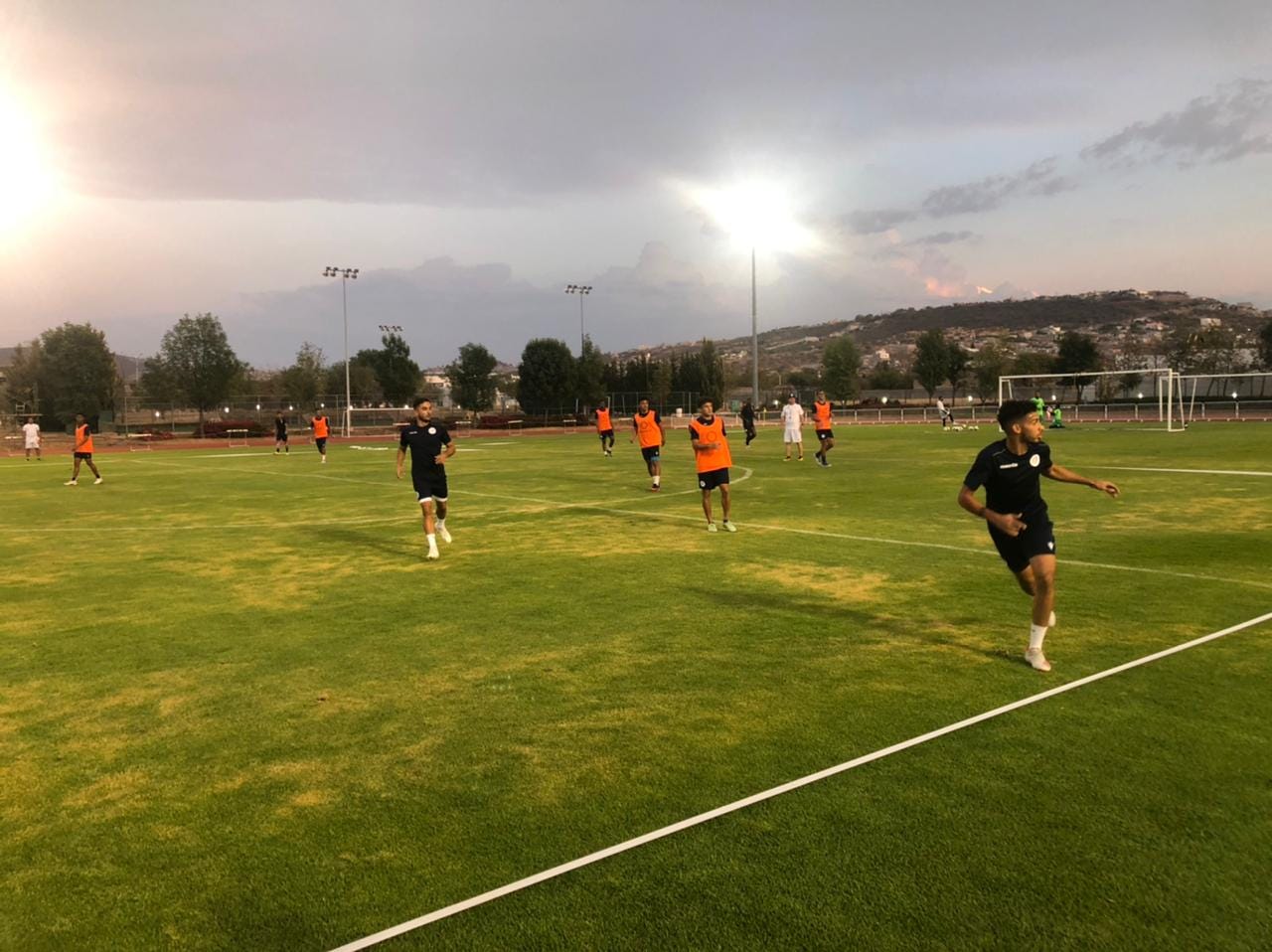Welcome to all new subscribers! Old subscribers, I love you too, but you know the lay of the land.
Big thanks to everyone who has introduced themselves and/or let me know what they’d pay if I go that direction with the newsletter. Also, I appreciate everyone who has shared the newsletter with their friends or posted about it on social media. It’s the biggest one-day jump in my one-year history, which obviously is gratifying. Continued sharing is appreciated!
Concacaf Olympic Qualification kicks off in a matter of hours. The tournament is unforgiving. Just two teams from Concacaf will make it to the Olympic games. Half of the eight teams at this stage will be eliminated in the group stage and the remaining two will have their dreams of competing in Tokyo dashed when they arrive at the medal round.
For me, these are the biggest talking points heading into the tournament, taking place a year later than expected but giving us a good show of some of the best rising stars in the region. It’s worth highlighting that a lot of the best stars will not be in the tournament, both because of COVID-19-related reasons but also because many of those players already are installed as fixtures for their senior teams, which have other commitments. That’s a bigger positive for the region than missing out on a few big names in Guadalajara this week is a negative.
On to the questions:
Will anyone beat Mexico?
Mexico is the favorite in this competition, as they are at nearly every competition.
The team is packed with Liga MX experience. I cherry-picked Chivas forward JJ Macias, Cruz Azul midfielder Roberto Alvarado and Pumas center back Johan Vasquez, and between those three alone, they have 226 starts in Concacaf’s best domestic league.
Will the pressure undo them? If so, they’re certainly not shying away from it. No matter if it’s a rivalry match against the United States or other key group games, El Tri feel like this tournament is theirs to lose.
“Quality-wise we’re much better. We’ve got players in Liga MX, young players that stand out there and outside there as well,” Macias told TUDN. “The only thing there isn’t is the exportation (of players). In this element, yes, they’re beating us, in finding a place for their players, but that’s my point of view.”
Mexican clubs’ reluctance to sell players may actually work in their benefit here. It’s logistically much easier for the U.S. to have Weston McKennie, Tyler Adams, Christian Pulisic, et. al with the senior team in Europe than try to get their release from their clubs and worry about travel regulations for this tournament. Mexico is missing out only on Diego Lainez and Edson Alvarez, with the Ajax midfielder (like that list of Americans) likely to be involved in the senior team this summer over the Olympics even if the teams do qualify.
That means it’s an extremely experienced group, full of players with national team experience. I see this Mexico team as an eerily close team to the senior side, with some of the same strengths (experienced, fast wings who are great in transition, one forward who is excellent in the area and out and will score goals, two-way midfielders who will do it all) and weaknesses (there’s maybe only one center back at the level needed, the forward depth falls off after option No. 1, there’s not really a true No. 6 to sit in the middle).
Mexico is the favorite for a reason. Anything less than a title for the former gold medal winners will be a disappointment.
Game one is critical for the U.S., Costa Rica
So what about the rest of the group? The game here in a few hours will go a long way toward deciding it.
If you consume English-language soccer media, you probably know a bit about the U.S. team. The top-line players are absent, but there is still a good group. And, if the U.S. truly is going to be the No. 2 team in Concacaf, shouldn’t it expect to finish in the top two of this competition?
I’m excited to see Jesus Ferreira, who I’ve watched in Dallas since his academy days, again have a go at playing No. 9 after successes with the senior national team. He’ll need to have a good day against Costa Rica, which has defenders and defensive midfielders ready to take the jump. Center back Fernán Faerrón has three Alajuelense teammates with him in defense plus Herediano center back Aarón Salazar as his likely partner. In front of them is Alajuelense’s savvy No. 8 Bernald Alfaro. All can defend well individually, but as a unit will almost certainly the U.S. some frustration.
If that isn’t enough, Manfred Ugalde, a Saprissa product now with City Football Group’s club in Belgium but set to move up the ranks sooner rather than later, leads the attacking line with MLS-based Luis Diaz and Randall Leal able to work with Ugalde to trouble defenders.
Forgotten in most of this is Gerson Torres, which shows both the depth in the Costa Rica squad and just how quickly things can turn in ‘player development.’ Torres was the shining star for the Ticos a few years ago, debuting with Club America in 2017 but returning to Costa Rica after a few years in Mexico.
The first match will go a long way points-wise to determining the outlook of the group, but also sets the tone mentally. If Costa Rica picks off the U.S., they roll up against Mexico brimming with confidence. If not, despite their talent, they may fade from contention. If the U.S. wins, the pressure is off, they can rotate the squad - which may be needed after the early kickoff today and the baking temperatures coming with it.
Is there a spoiler in Group B?
Honduras has properly been seeded by Concacaf and heads this group based on its success in past Olympic qualification tournaments. That said, I wonder if Los Catrachos are riding a bit on their reputation.
Miguel Falero’s group has some experience, but whether it’s other teams catching up or Honduras falling short, the professional minutes tally feels smaller than it’s been in previous editions.
Still, it’s a good group, and who will take advantage?
Canada has World Cup qualification matches this window, so it isn’t able to lean on players like Alphonso Davies and Jonathan David (who may not even make it to WCQ because of Bundesliga and Ligue 1 regulations). Players like Derek Cornelius, Zachary Brault-Guillard and Marcus Godinho provide experience at the back, in a bit of a flip from what the senior team is dealing with. Up top, Tajon Buchanan is coming off a great season with the New England Revolution while Ballou Tabla is a player many in the region have been waiting for to finally break through. If this isn’t the moment, it may never come.
El Salvador also comes into the tournament with hope, thanks in no small part to Hugo Perez serving as the manager.
With several dual-national recruits, like Perez’s nephew and former LAFC attacker Josh Perez, San Jose Earthquakes midfielder Eric Calvillo and Dutch-Salvadoran forward Enrico Hernández, released by Vitesse for the tournament, in the mix, Perez likes what he sees. In a way, El Salvador is looking at their opening contest against Canada like we’re looking at the U.S.-Costa Rica game with Perez saying playing an improved Canada will be an “interesting game.”
“The players have done excellent work. Since I got here in January, they’ve worked in an excellent way,” Perez said. “I think tomorrow will be important in the way they get up for the game. When they play, you have to see the desire you have to triumph.”
Despite my caution about Honduras, I think the group sets up well for them to win and get into the all-important semifinal. Beyond that, it could get weird.
Could Caribbean teams surprise?
The Dominican Republic and Haiti are expected to finish at the bottom of their respective groups. Let’s take a bit longer look at each squad.
The DR is led by Jacques Passy, a Mexican coach noted for his deep analysis of his own players and each opponent. With the DR senior team playing a pair of critical World Cup qualifiers this month, Passy will pass the reins over to members of his staff, but his fingerprints still will be all over the team as it looks to spring a surprise on the favorites in Group A.
Already his recruitment efforts are bearing fruit, with new faces like Germany-born midfielder Fabian Messina, U.S.-based 17-year-old Edison Azcona (who played for the senior team in January’s friendlies) in the group as well as players like Edarlyn Reyes, who regularly has suited up for the senior team in other competitions.
It remains to be seen if there’s enough attacking punch to truly challenge the top teams, but the defense may be able to make life frustrating for some of the top teams.
Haiti is a mystery in Group B, and not only because of their preparation match against Mexico fans that ended in a 15-0 win for the professionals. We don’t know all that much about a lot of the roster.
Peterson Joseph Junior (yes, we are extremely old), Haiti’s top striker, reportedly had a visa issue but should be able to play. This is one of the first good looks we’ll get at Christopher Attys, an Inter Milan youth midfielder currently playing with SPAL’s youth teams. And even familiar players like Bicou Bissainthe and Francois Dulysse who played in USL League One have minimal professional minutes.







